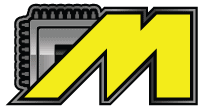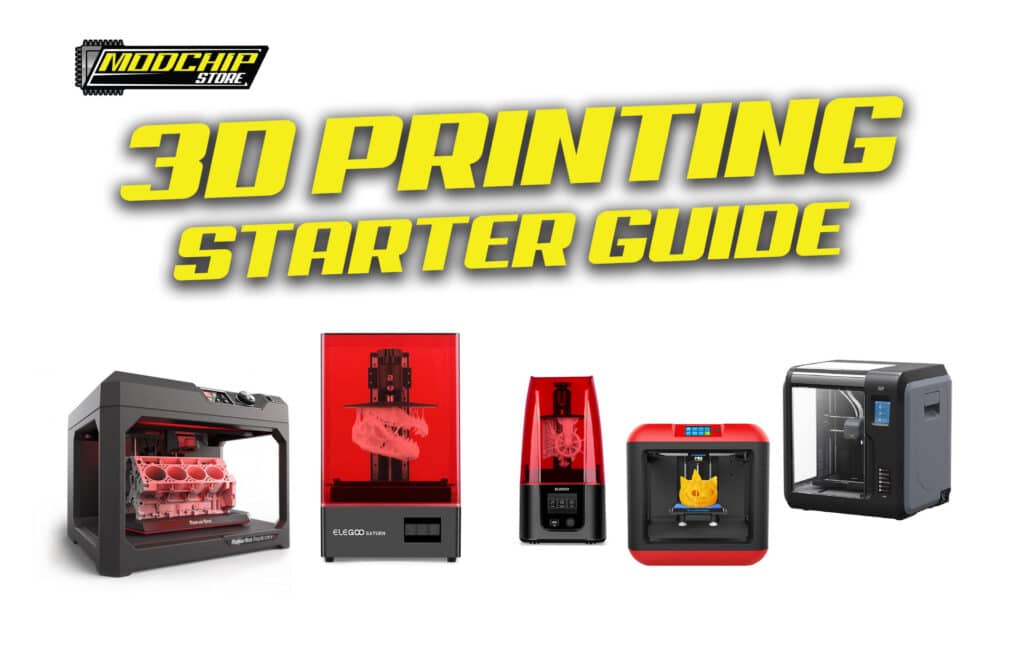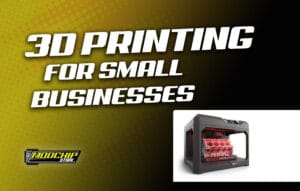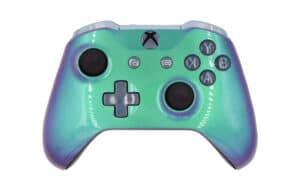Since the turn of the century, we’ve seen lots of new technologies. However, none has exploded to the mainstream like 3D printing. It’s popular in almost every industry, among hobbyists and entrepreneurs. In fact, 3D printing is one of the most innovative technologies for small businesses. 3D printing has drastically changed the way in which we create objects. It is a process by which a machine or person can lay down successive layers of material to form a 3D object from digital design data. Originally known as “rapid prototyping,” 3D printing is now also called additive manufacturing, because it adds materials where they are needed, layer by layer, instead of cutting away excess material. It is a revolutionary technology that has changed the way we think of manufacturing and the world. The technology is still relatively new but it has already disrupted many different industries from consumer goods to medicine. In this 3d printer beginner guide, we will discuss all the different types of printers, printing materials as well as some of our best 3d printers for beginners.
But what makes this technology so special? Well, here is a quick look at everything you need to know about 3D printing.
What is 3D printing?
Most people know 3D printing as a technology that allows you to print objects into existence. In more technical terms, it is an additive process in which layers of material are built up into a 3D shape. The machine used is conveniently named a 3D printer and has a long history.
The history of 3D printing
3D printing has been in existence for the last 40 years. It was first introduced in 1981 and was known as Rapid Prototyping (RP) technology in its earliest form. This was the work of a certain Dr. Hideo Kodama from Japan, who developed it as a more cost-efficient method of creating prototypes.
In 1983, Charles Hull was also developing his idea of 3D printing. This was stereolithography and could allow designers to use digital data to create 3D models and physical objects.
In 1984 years later, he created the first stereolithographic apparatus machine and would then go on to establish 3D Systems Corporation, which introduced SLA-1, the first commercial 3D printer in the world. For the next 15 years, 3D printing continued to develop under the radar. This was due to contributions from people like Carl Deckard, Scott Crump, and his wife, Lisa Crump.
In 1999, a lab-grown urinary bladder was successfully transplanted into a patient. That is when manipulating 3D printed organs in surgery became real. 3D printing continued to grow away from the public eye until 2009 when many new companies entered the industry. This allowed the technology to advance faster while becoming more affordable and accessible to the public. The trend has continued to date, where 3D printers are cheaper and more available than ever before.
How do printers work?
A 3D printer does not use ink. Instead, it deposits molten plastic or powder layers and combines them into an existing model using ultraviolet light or adhesive. The printer works by building up a 3D model layer by layer from the bottom. Since the printer functions automatically, it creates a pattern over time. This is done by changing a 3D Computer-Aided Design drawing into many cross-sectional, two-dimensional layers that effectively separate 2D prints that sit on another without a paper between them. A digital file should instruct the 3D printer to print the material when making a 3D print. The appropriate file for this function is the G-code. The file contains coordinates that guide the movement of the printer, either vertically or horizontally, which are also called the X, Y, and Z axes. 3D printers print these layers at various thicknesses, called layer height.
Types of 3D printing technology
Fused deposit modeling (FDM)
It is also known as Material Extrusion. This technology uses a filament reel fed to an extrusion head with a heated nozzle. When the extrusion head heats, it softens and lays down the heated material at different set positions, where it cools, thus creating a layer of material. After the platform is built, it moves down and becomes ready for the next layer.
This process has short lead times and saves on cost, although low dimensional accuracy usually requires post-processing for a smooth finish. However, this process is unsuitable for critical applications because it may create weak parts in one direction.
Stereolithography (SLA)
SLA was invented in 1986 by Charles Hull, who founded the 3D systems company. This type of printing technology works with an ultraviolet laser and a vat of liquid polymer resin to build the layers of an object one at a time. For every layer, the laser beam traces a cross-section of the arrangement on the surface of the liquid resin.
The pattern traced on the resin is cured and solidified using an ultraviolet laser and fuses to the underneath layer.
The SLA elevator platform comes down after tracing the pattern by a length equivalent to the thickness of one layer, between 0.002” to 0.006”. After that, a blade filled with resin cuts through the cross-section of the part, thus re-coating it with new metal. Finally, a subsequent layer pattern is traced on the new liquid surface, joining the previous layer. Often, the SLA requires support structures depending on the print orientation and the object.
Selective Laser Sintering (SLS)
This technology uses a high-power laser infusing of small particle powder, resulting in a three-dimensional shape of interest. The laser carefully fuses powder by scanning the layers on the surface of a powder bed. The powder bed is lowered by one layer thickness after examining each cross-section. A new layer of material is then repeatedly applied on top until the object becomes complete.
Digital Beam Melting (EBM)
Digital Beam Melting utilizes a high-power electron beam that generates the energy required for high melting capacity and high productivity. In addition, the hot process allows the production of parts that have no residual stress, and the vacuum ensures a controlled and clean environment.
Laminated object manufacturing (LOM)
Laminated Object Manufacturing falls under the category of sheet lamination. They are two; LOM and UAM (Ultra Additive Manufacturing). LOM applies adhesive and alternate layers of material to form objects with aesthetic and visual appeal.
On the other hand, UAM combines thin metal sheets via ultrasonic welding. It is low in temperature and has a low energy process that can be used with stainless steel, aluminum, and titanium.
Selective laser melting (SLM)
Selective Laser Melting creates parts from metal by using the laser in bonding powder particles together, layer after layer. It fully melts the metal particles and needs support structures since it requires high heat inputs.
During post-processing, the support structures are removed either via CNC machining or manually. The residual stresses can then be removed by thermally treating the parts.
SLM produces parts that are stronger than conventional metal and have good surface finishes. These parts can be used with super metal alloys and maybe ceramics, which are a challenge in processing by other means. However, the parts’ sizes are limited by the volume of the 3D printing system used, and the processes involved are sometimes expensive.
FDM 3D printing materials
When you purchase a 3D printer, it will typically include a spool of filament for you to use. Once you have exhausted this material, how can you proceed? Find out about the various kinds of 3D printer filament that are available for use with fused deposition modeling (FDM) printers in our guide to the filament materials. We’ll examine the pros and cons of each option to help you make an informed decision.
ABS
Acrylonitrile, butadiene, and styrene (ABS) are all the same as plastic used in LEGOs. It is durable, nontoxic, and easily retains color. It is also easy to form, but hard to break, as it is brittle and begins softening at about 450 degrees Celsius (about 800 degrees Fahrenheit). These properties make ABS suitable for 3D printing. You need a large heater to reach its operating temperature of 220 degrees celsius, but ABS becomes soft and pliable when heated and hardens quickly. A heated print bed with a printer is also needed for use in ABS, as it is liable to stick to that hot surface.
The scent of ABS can be unpleasant when heated, and the ABS vapor may have a toxic stench, so you will need good ventilation. ABS is damaged by UV radiation, so it is not healthy for long-term exposure.
Pros of ABS: Tough, shock-resistant material; Nontoxic and impervious to water.
Cons of ABS: Not recommended for use outdoors; It has an extremely high melting point; It produces unpleasant fumes.
PLA
Polylactic acid (PLA) is a polymer material made from substances such as cornstarch or sugarcane. PLA resembles the substances used in biodegradable plastic packaging. It melts between 180 and 200 degrees Celsius, depending on other components Added for color and texture. PLA is a strong, durable material. PLA begins to deform once it reaches a temperature above 60 degrees Celsius, and the material is not fully fire or waterproof. It has a slightly pungent scent when heated, like microwave popcorn, but emits no harmful gases or vapors. PLA has high friction resistance, making it suitable for 3D printing. PLA is also nontoxic, biodegradable, and can be recycled. It is easy to work with and can be used with a heated print bed. PLA is widely considered to be the most economical option for 3D printers, as it is easier to print with than ABS.
Pros of PLA: One of the easiest 3D printer materials to work with.
Cons of PLA: PLA material degrades over time and has a much rougher texture than other options on the market.
PETG
PETG is a semi-rigid material made from glycol-modified polyethylene terephthalate, which is widely used in the making of water bottles. It is known for its impact resistance, but it tends to be slightly less scratch-resistant than other plastic products. PETG is among the 3D printing materials that are mainly used. It can be classified as an engineering material, but you can go for it if you are a beginner. A good alternative for engineering applications since it has good thermal properties, significant combining impact, and chemical resistance. In addition, it is cheaper compared to other engineering materials. Several types of this material, including PETG, PETE, and PETT, are available. These materials will be of use in all of the filament patterns which are made from PET-based materials.
Pros of PETG: Glossy smooth surface with tough rigid material for minimal warping issues. Minimal odor while printing and offers great bed adhesion.
Cons of PETG: Stringing can be an issue with unoptimized settings and bridging as well.
Nylon
The name nylon can be applied to a number of synthetic polymers originally derived as alternatives to silks. Nylon is a resilient synthetic material with a high tensile strength that can hold a lot of weight without breaking. It melts at a temperature of approximately 250 degrees Fahrenheit, and is nontoxic. Nylon is a good option for end-use parts since it overcomes mechanical stress and possesses chemical resistance. Nylon’s use as a means of 3D printing is relatively recent, but the material is gaining momentum because of its tough and water-resistant prints. It is economical, as nylon is extensively used in a variety of other fields, and it is not harmed by various chemicals. Nylon filaments are hygroscopic, so they customarily absorb moisture from the atmosphere around them. Printing Nylon after it’s absorbed moisture can lead to print quality issues and requires care in filament storage.
Pros of Nylon: Tough material with impact resistance. Scratch-resistant and odorless.
Cons of Nylon: Must be stored in an airtight container to prevent water absorption. Warping may occur during printing if not properly stored. Not recommended in humid and wet demographics.
ASA (Acrylic Styrene Acrylonitrile)
ASA, also known as Acrylic Styrene Acrylonitrile, is great for outdoor applications due to its high UV, temperature, and impact resistance. Apart from these benefits, the material has a low density and is resistant to many chemicals making it an excellent material for outdoor products. ASA is a 3D printable plastic with properties similar to ABS. It was originally developed as an alternative to ABS that would be more UV resistant by adjusting the type of rubber used in the formulation. ASA is known for high impact resistance, greater temperature endurance.
Flexible 3D printing materials
TPU and TPE
Flexible filaments, commonly known as TPE or TPU, are known for their elasticity allowing the material to easily curve and flex. Thermoplastic Elastomers (TPE) are made up of a combination of hard plastic and rubber; thus the name “flexible filament.” Thermoplastic Elastomers (TPE) stretch and flex, which is why it is sometimes referred to as “elastic filament.” The elasticity of the plastic depends on the type of TPE and the chemical formula of the manufacturer. For instance, some filaments can be deformed partially like a car tire, while others may be deformed entirely like a rubber band. Some TPE filaments are highly elastic and are very stretchy, and some TPE filaments are stiff and are not very stretchy.
Pros of Flexible materials: Flexible and resilient with a long shelf life. Impact and vibration resistance.
Cons of Flexible materials: More difficult to print and bridging can be a problem. Some extruders may have issues with flexible material.
Specialist 3D printing materials
Composite materials
Composite materials result in enhanced properties by combining a polymer with fibers of other materials. Thus, they offer better stiffness and strength than other 3D printing materials. Engineering composites consist of glass and carbon. If you need unique visual properties, composite alternatives like wood and ceramic filaments got you covered.
3D Printing Support types
These materials offer support to a print design when it is being printed and later on removed after the process is complete. They exist because the material used to print a design can be used for printing supports, but when released, they can affect the dimensional quality and the surface of the design print.
Breakaway
Breakaway is a support material that can be removed manually. It helps make the process faster than waiting for it to dissolve as it retains the part’s dimensional accuracy.
Soluble support materials
These are soluble materials that help keep you from the risk of damaging your part as you manually remove it. For example, PVA support material is soluble, while HIPS is a d-limonene solvent.
3D printing applications
3D printing is majorly based on ease of customization and design freedom. Thus, various fields have embraced the use of 3D technology. These fields include automotive, medical, aerospace, robotics, rail, and many more.
Automotive
The automotive field has used 3D printing technology because it is cost-friendly and allows fast prototyping of modified and new parts for small-scale manufacture and testing.
Aerospace
3D printing is used in aerospace to create light but geometrically complex parts like blisks. It allows the creation of whole components, saving on material and reducing lead times.
Rail
The rail industry uses 3D printing to create customized parts such as house covering for train couplings and armrests for drivers. It used this technology to make modified parts and repairing damaged rails.
Medical
The medical industry has embraced the power of 3D printing technology to create made-to-measure machines and implants. For instance, eye lenses can be quickly modeled from a digital file that matches a patient’s body scan. It can also reduce production times and costs incurred.
Robotics
The freedom of design, manufacture, and customization of 3D printing technology suits the robotic industry. Moreover, it includes the creation of agile robots and modified exoskeletons with advanced convenience and agility.
Construction
The construction industry has applied the 3D printing technology in printing houses that are now commercially available.
Jewelry
A 3D printer can produce jewelry in two ways; direct and indirect production. Direct production involves creating an object straight from the 3D design, while indirect manufacturing is when a 3D printed object is used to create patterns for investment casting.
Education
Tutors and students in the classroom are using 3D printers. Students can materialize their ideas in fast and cost-effective ways through these printers.
Food
The food industry uses additive manufacturing as a selling point in attracting customers from all corners of the world.
3D printers for hobbyists
If you pursue 3D printing as a hobby, several companies provide flexible and affordable 3D printers with great features and expandability.
Creality Ender 3
You simply can’t go wrong with the Creality Ender 3. One of the most sought-after 3d printers on the market. Ideal for beginners looking to start an exciting new hobby. This machine is quick to set up and offers high precision right out of the box. There are also literally 100’s of mods for this machine. You can also expect the user experience to be very straightforward and easy to learn.
Pros
- Very cost effective to purchase
- Quick assembly
- Tons of upgrades available
Cons
- Takes time to get prints at optimal quality
- Small print area 220x220x250mm
Ultimaker S3
Starting off our list is this fairly compact-sized 3D printer from a very reputable manufacturer, Ultimaker. The machine is capable of dual extrusion, which allows you to print with more than one filament at a time.
Its print volume is 230mm*190mm*200mm, which is medium, and quite literally, the perfect size for hobbyists. Ultimaker also claims that this printer can print in 20-micron resolution on its automatically calibrated heated print bed.
Other notable features are an onboard camera that allows you to monitor your progress from miles away and the user-friendly and free Ultimate Essentials Software.
Pros
- Semi-enclosed build volume
- Composite material compatibility
- Auto-bed leveling
- Dual-extrusion.
- Wireless connection is available.
Cons
- Uses 2.85mm filament.
Monoprice voxel
This entry-level 3D printer is another compact and budget-friendly machine for hobbyists and enthusiasts. The device prints with the most common filament types (ABS and PLA), while offering multiple connection choices.
Coming in at just over $400, this nearly cube-shaped printer is packed with a no-tool-required and easy to replace nozzle that prints 150mm*150mm*150mm in 50-micron resolution. This work is done over a heated removable build plate that is semi-automatically leveled.
A 2.8-inch color touchscreen gives you access to the user interface, and you can send files to the 8GB of onboard memory through WIFI.
However, the feature that makes the Monoprise Voxel stand out is its out-of-box ready to use design. It ships fully assembled and only requires you to plug it in, send a file, and print away to satisfaction without studying extremely long manuals.
Pros
- Easy to replace parts
- Very affordable
- Well compact size
Cons
- Semi-auto leveling.
FlashForge Finder Lite
This 3D printer from FlashForge is not only easy to set up and use but might also be their safest one yet. It has built-in electrical parts and well-framed sides that reduce the risk of both exposed wires and too much noise when printing.
It’s very easy to use straight out of the box. It comes almost fully assembled, needing only to be placed on the print bed and filament spool to complete its look. But since it lacks onboard memory, LAN, and WIFI, you will also need to load your file onto an external flash drive before you can print.
The Flashforge Finder Lite can only print in 140mm*140mm*140mm in 50-microns resolution on its removable glass bed.
Moreover, it is PLA only compatible, which is biodegradable and emits no harmful fumes.
Lastly, the company produces a variety of colors to match the interior of your house.
Pros
- Easy to set up
- Well compact for moving around
- Removable glass bed
- Very safe to use
- Noiseless
Cons
- No wifi or ethernet connectivity
- No auto-calibration
- Only prints with PLA
Elegoo Mars Pro
The Elegoo Mars pro is a compact and inexpensive UV Resin printer comparable to the Anycubic Photon or Longer Orange 30. It packs more than decent hardware and even exclusive software.
Its matrix light source comprises 28 50-watt UV lights for uniform light emission for top-quality prints and accurate print sizes. Furthermore, its upgraded tank coupled with the new Z-axis mechanism provides longer printing and a faster curing process. Lastly, the USB thumb drive is now located on the front for ease of access.
Best of all, it’s the first resin-based 3D printer to use sliced file of .ctb format that reduces file size by a whopping 90% compared to the previous .cbddlp format and provides a higher success rate for printing bigger models.
However, as is with all UV Resin printers, self-protection by wearing gloves and a mask is necessary. You should also ensure that the printer is only used in a well-ventilated room.
Pros
- Quiet printing
- Little maintenance is required
- Fairly least to use
Cons
- Prints stick to build plate
- Fairly small build plate
3D printers for business
For business applications such as prototyping, home décor, and promotional products, you can use 3D printers such as;
ANYCUBIC Photon
This low-cost desktop DLP 3D printer is one of the most appealing options on the market. It has a build volume of 115mm*65mm*155mm, which makes it smaller than other DLP 3D printers, but at that price point and with impeccable software, you’ve got little to complain about.
The software on this miniature beast, a proprietary program, is well beyond any of its competitors. It takes some time, but you’re sure to get used to it.
On the other hand, the support generation is far easier on this model, especially when it comes to auto-generating the support you need for difficult projects. But you can still do this manually in various ways with the Photon slicer software.
Pros
- Very affordable
- Custom slicer with remarkable support generation.
- Fairly easy to set up and use.
Cons
- Small build volume
- Prints may stick to the print bed
- Lack of customizations
Elegoo Saturn
If your business involves large prototype projects, you should consider this 3D printer. The Elegoo Saturn is a large format MSLA that looks a lot like a scaled-up version of the Elegoo Mars. However, this 3D printer packs even better hardware than its predecessor despite its looks.
An 8.9inch 4K monochrome LCD helps significantly reduce the resin’s curing times. In addition, uniform light emission from a 54 UV LED matrix ensures accurate print size and superior outputs.
This 3D printer can build a volume of 192mm*120mm*200mm in Hd resolution of 50-microns. However, this build volume requires great stability for the machine throughout the printing process. This is achieved using double linear Z-axis rails and set screws on the sandblasted build plate.
Other features include 4GB of built-in data disk and a 3.5-inch color touchscreen powered by the latest firmware, ensuring a user-friendly experience.
And the cherry on top is the availability of an Ethernet port for faster transfer speeds from your LAN.
Pros
- Large build volume
- High-resolution printing
- Easy to use interface
Cons
- No carbon filter
- Noisy cooling fans
Creality CR-10 S5
The Creality CR-10 S5 offers the biggest build volume of the bunch; a staggering 500mm*500mm*500mm on a heated print bed in a 100-microns resolution.
It features a dual lead screw mechanism and dual bed rails for smooth movement of its axis parts. However, it’s still not sturdy because it lacks a brace connecting the top gantry’s frame to the base.
The vast size of the print bed causes it to be unevenly heated and takes a significant amount of time doing so.
Pros
- Very affordable
- Compatible with a wide variety of materials
- Heated bed print
- Compatible with many programs
- Print can resume even after a power failure of filament runout
Cons
- Manual bed leveling
- Hard to assemble
- Ghosting is present
- Outdated User Interface
Industrial 3D printers
Industrial 3D printers empower rapid and cost-efficient jigs production and improve operational agility. They also outsource parts to an external vendor to machine from a solid billet of metal or plastic. Some are 3D Systems ProX 800, 3D Systems ProJet 7000HD, and 3D Systems DMP Factory 500.
Conclusion
3D printing technology has brought about many benefits in different fields, a trend we expect to continue as more people and sectors embrace the technology.













